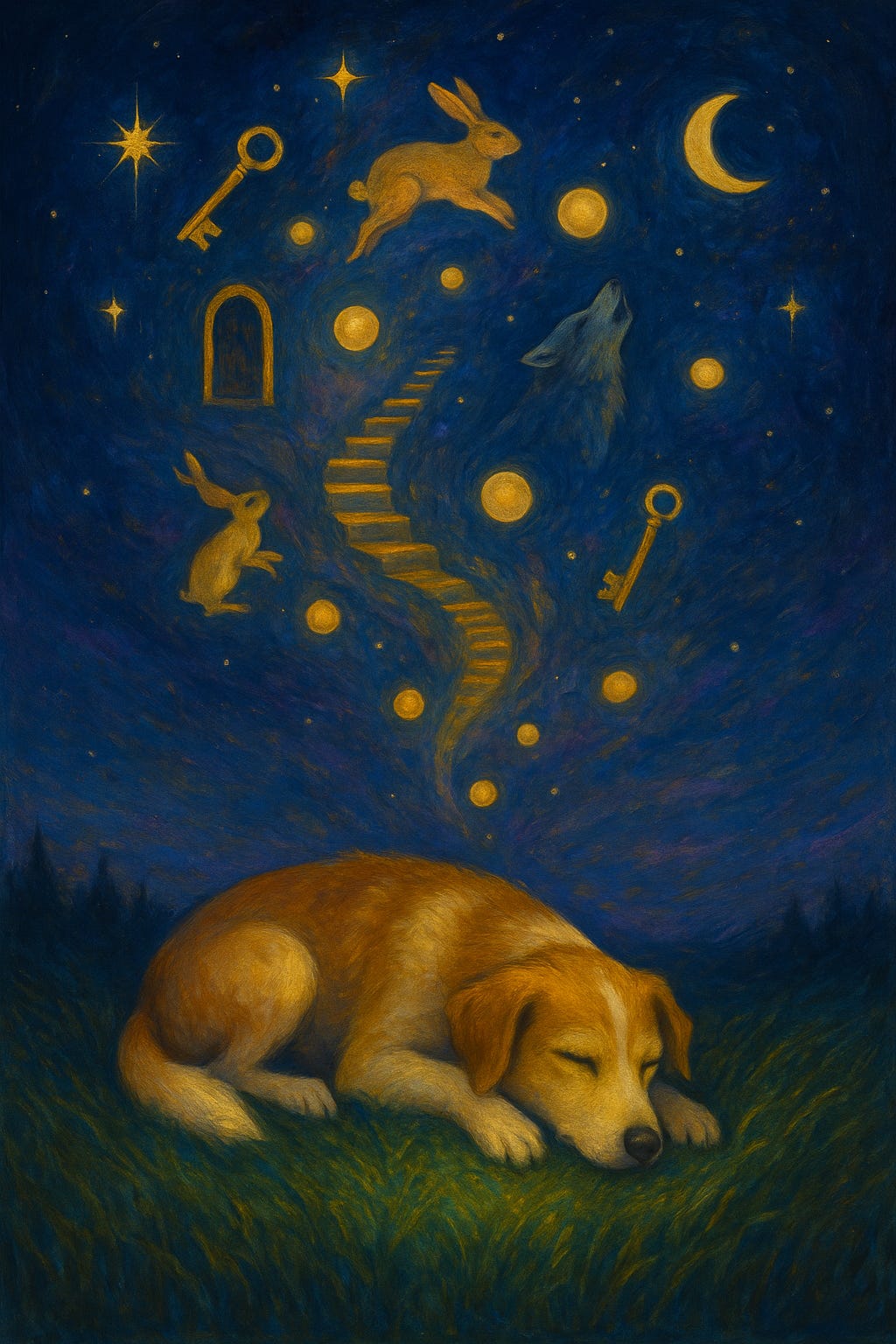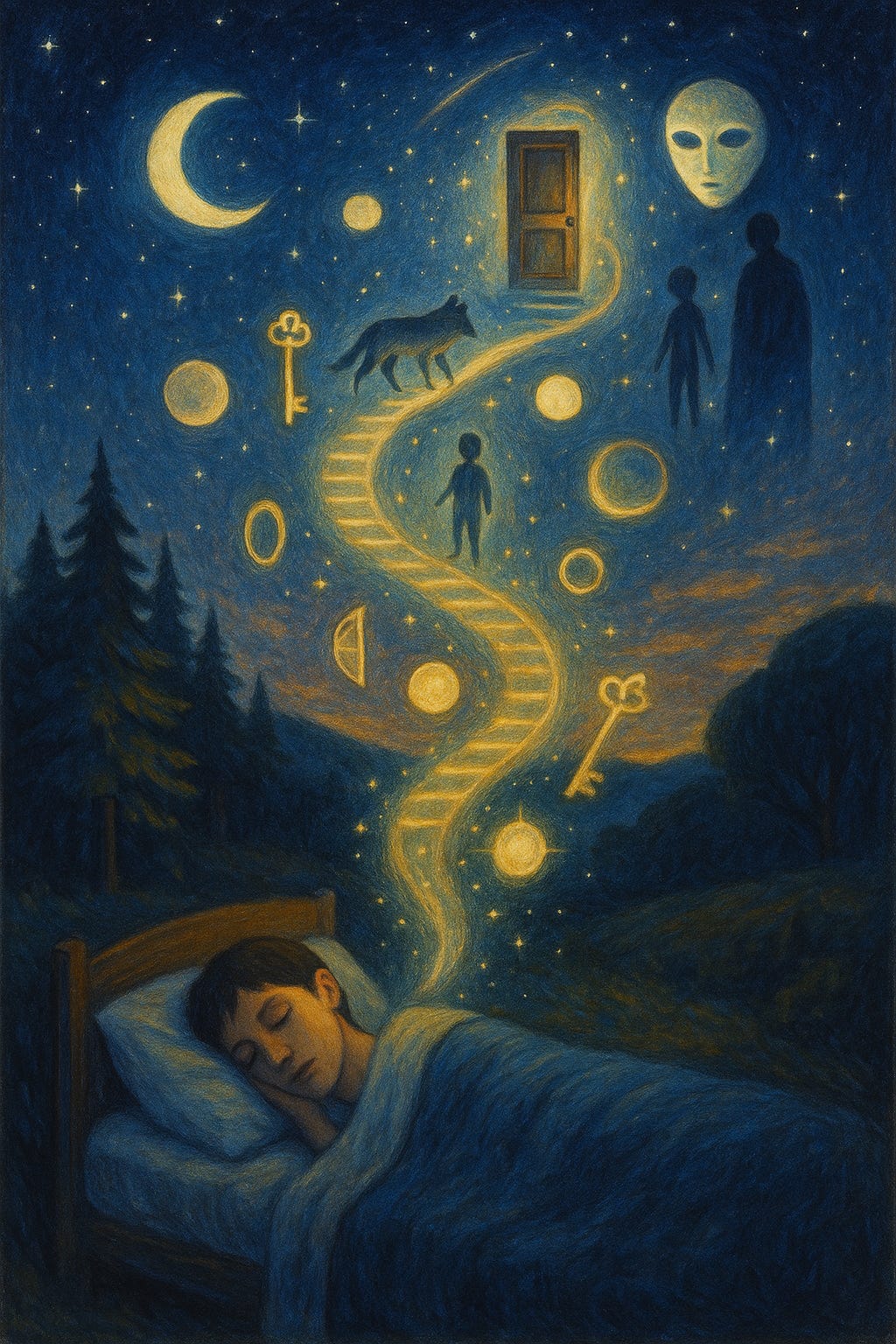Not too long ago, I dreamed I was wandering through a vast hedge maze. The walls rose high above me, lush and green, alive. As I followed one narrow path, I suddenly heard the low rumble of lions.
The lions presence was close, close enough that I turned quickly, slipping down another corridor to avoid their gaze.
But even as I moved away, the lions prowled along the edges of the path I had just left, as if they could smell me still. Then: without warning… the maze itself began to shift.
The towering hedges slid and groaned, sealing off the lions, while new passageways opened before me, green and endless.

I woke with the images still pulsing in my chest. I didn’t need a textbook to tell me the dream mattered… I felt it. Dreams have a way of doing that: slipping past our rational egoic defenses, and leaving us with images, feelings, sensations, and riddles that follow us into the daylight.
I share this story as it demonstrates how dreams are an expansive way into the inner life for introspective, spiritually curious, and emotionally attuned people.
Why We Forget to Dream
In much of the Western world, we don’t grow up with dream-talk at the breakfast table. Our cultures prizes productivity, rationality, and linear thinking, often at the expense of the imaginal, the symbolic, and the nonlinear. Dreams are frequently shrugged off as random brain static, or pathologized as symptoms.
But here’s the thing: everyone dreams. Even people who swear they “never dream” still show dreamlike brain activity during sleep as indicated by empirical research.
Each night, our unconscious is alive with images and dramas unfolding just beyond waking awareness. Children cry out in terror at monsters only they can see. Even our dogs twitch and whimper through their nighttime hunts.
So, the question is not whether we dream. It’s whether we notice.
What Dreams Can Do
In therapy, I’ve seen dreams do what words can’t. They reveal wounds that have no language, unearth patterns that keep someone stuck, and spark insights that open hidden doors no one knew were there. Often, the moment a person begins to bring their dreams into the room, something shifts. It’s as if the unconscious itself has been invited to sit down with us, and I have learned that the psyche always has something to say.
Carl Jung beautifully once called dreams “a little hidden door in the innermost and most secret recesses of the soul.” I’ve come to believe that with my whole heart. Dreams can show us who we’re becoming, what we’re resisting, or what we most need to grieve. Dreams are not distractions from life, but rather symbolic invitations to live more fully.
Beginning to Listen
To dream is to remember that something larger lives within you, and the psyche longs to be known.
If you’re new to working with dreams, the first step isn’t to decode them in a reductive fashion, but rather start by simply listening.
Here are a few practices that have helped me over the years from depth psychotherapy, Jungian psychology, and working with my own dreams for years. These are shared not as rules, but as reflective invitations:
Set the environment for dreaming: Sometimes before sleep, I’ll whisper to myself something along the lines of: “inner-dream maker, please show me a dream tonight.”
Notice it’s not about control, but about curiosity. Human psyches often respond well to sincere interest and intention setting.
Catch what you can: Some mornings I wake with a whole myth unfolding. Other times, it’s nothing more than a single image, a fleeting word, a colour, or a strange feeling that lingers in my body. Whatever arrives, no matter how small, I try to notice it and give it space.
Even the smallest scraps of dream have a way of carrying meaning.
Write it down quickly: Keep a journal or your phone nearby. Don’t worry about neatness; even half-legible scribbles or texts to yourself matter. Include the feelings, the body sensations, the tone of the dream. Something in you worked hard to bring this forward… treat it with reverence and respect.
Ritualizing this as a morning routine with a sacred journal or special pen can make this more inviting; whatever you do though, don’t turn this into a chore!
See it as story: Sometimes I’ll give my dream a title, as if it were a poem.
I look at the symbols; animals, weather, houses, colours, tools, people, monsters, the environment, and I might ask: “what do they remind me of? What are the qualities being presented here? What is their function? Who or what might they be capturing within me? What every-day belief or attitude of mine might this dream be trying to comment on, compensating for, supporting, or attempting to balance out?”
Every dream symbol can be a carrier of possibility and transformation.
Let the dream ask its own questions: Instead of only asking “What does this mean?”, I’ve also learned to ask: “Where is this dream trying to take me? What wants to find expression through me?”
Dreams are less about definitive answers and more about unfolding directions.
So let’s walk the dream world together,
Mark
References
Archive for Research in Archetypal Symbolism (ARAS, 2010). The book of symbols: Reflections on archetypal images. Taschen.
Herlin, B., Leu-Semenescu, S., Chaumereuil, C., Arnulf, I. Evidence that non-dreamers do dream: a REM sleep behaviour disorder model. (2015). Journal of Sleep Res, 24(6), 602-9.
Jung, C. (1964). Man and his symbols. Princeton University Press.
Marchiano, L., Stewart, D., & Lee, J. (2024). Dream wise: Unlocking the meaning of your dreams. Sounds True.



